TRANSMISSION FOR DUMMIES #3: Transmission across southern Minnesota — It’s all connected!
July 8th, 2005

Remember Michael Noble?s vision via Northstar Sierra Club?s newsletter:
Instead of planning transmission to serve new coal plants, let’s begin discussing a project that combines the following: renewable energy from wind farms and bio-gas plants, a new high-capacity border-to-border powerline across southern Minnesota and northern Iowa, and as many locally owned energy projects as can be organized along the route. Let’s dub this project Next Generation, a $5 billion project completed within five years. What if this Next Generation project offset the need for two or more coal plants? What if this Next Generation project brought wealth and opportunity to 20+ communities? The stage is already being set.
Is the state really set for a line across the bottom of Minnesota as Michael dreams? This is transmission, a ?grid,? and transmission lines are not built arbitrarily from the middle of nowhere to the middle of anothernowhere.
As we said in Arrowhead, “It’s all connected!”
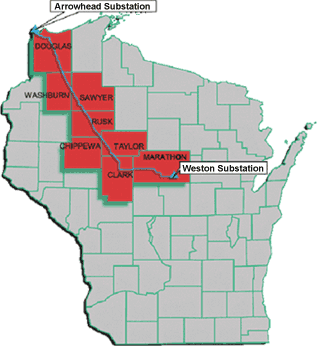
A: Hypothetically if the line came close to anywhere, it might be connected.
Jones, Tr. at 5913. (Arrowhead WI I, p. 50)
A: If you connected all the systems together, they would be connected.
Jones, Tr. at 5918. (Arrowhead WI I, p. 50)
A: It’s possible if you connected them, they would be connected.
Valine, Tr. at 6747. (Arrowhead WI I, p. 50)
Now let’s connect the dots. Where did that idea of a big honkin? transmission line across southern Minnesota come from anyway?
It started with the WRAO Report, a transmission planners dream of all the transmission that anyone in the world could want. Here’s the map of this early version of the line across southern Minnesota, starting out in South Dakota, and extending to eastern Wisconsin.

Now look at Lignite Vision 21‘s dream transmission to bring coal to market, with a big magenta line from Huron to Sioux Falls to Lakefield Jct., the western part of WRAO 9a:
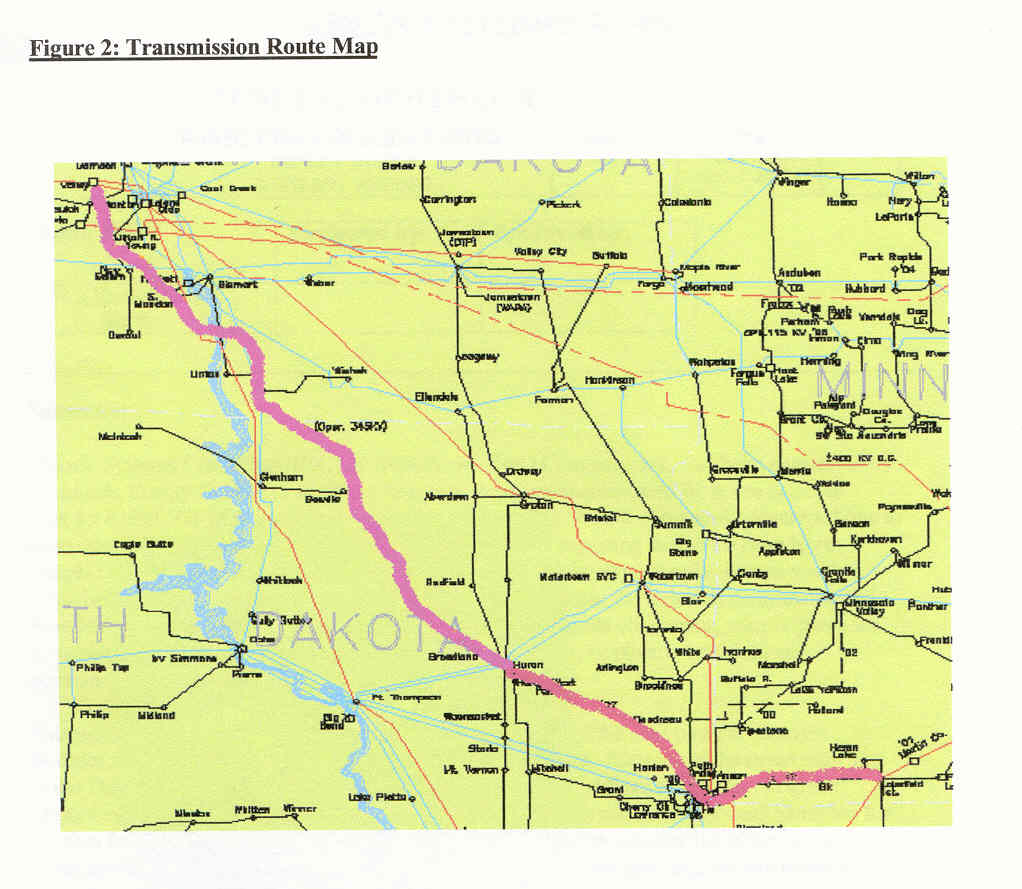
Then there’s Matt Schuerger’s MTEP03 or Northwest Exploratory Transmission Study Power Point that shows large scale transmission across the middle of Minnesota and also further south in Iowa (too big to upload).
Next is American Transmission Company’s 10 Year Plan, which shows the eastern part of WRAO 9a (are you starting to see a pattern here?) from Lakefield Jct. to Adams, to Genoa to Columbia, in Wisconsin.
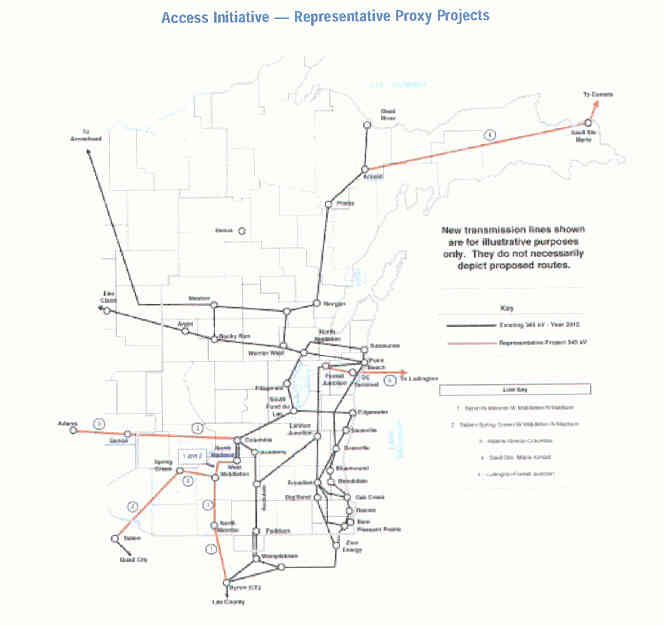
And last but not least, the CapX2020 Transmission Plan, that shows that middle stretch between Xcel’s SW MN 345kV Sioux Falls to Lakefield Jct., and connecting to ATC’s Wisconsin part:
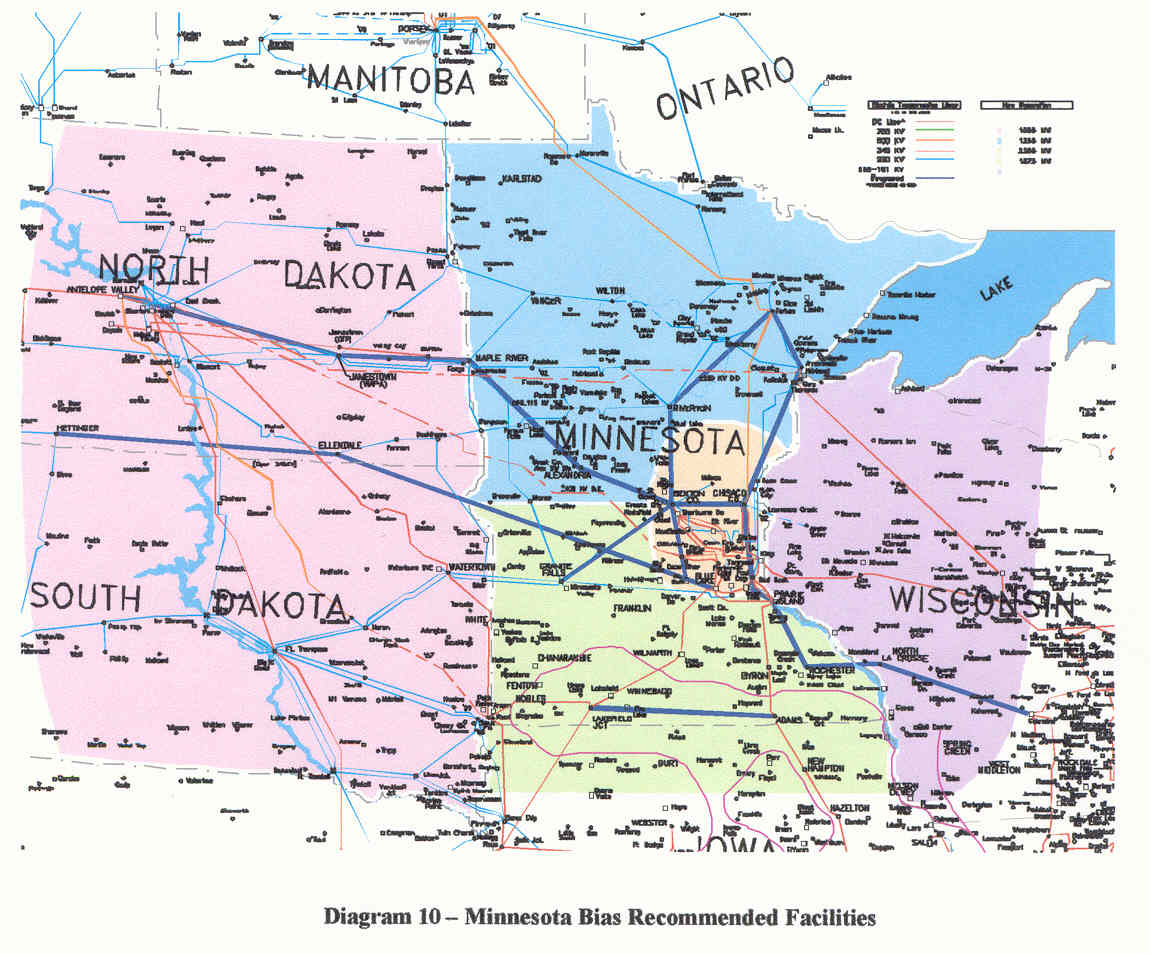
As you can see, we’ve been working toward’s Michael Noble’s dream of transmission across southern Minnesota for some time. And all the coal west of western Minnesota could not be built, Big Stone II, Coal Creek upgrade, and all the others in the MISO queue, because transmission would not be built, but for the Transmission Omnibus Bill from Hell“>Transmission Omnibus Bill from Hell.
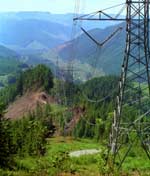
This is a test: Does this look like our renewable energy future or our irretrievable fifty or more year commitment to fossil fuel central station power? Remember, things electrical are binary!
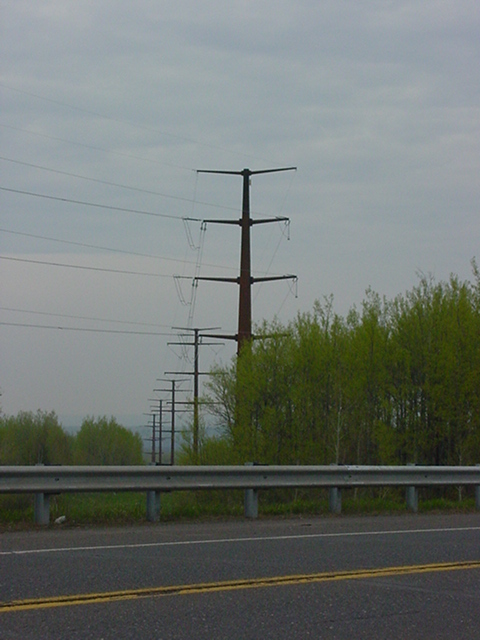
Grand Marais Art Festival – stop in at the GunFlint Tavern!
July 6th, 2005
Heading up to Grand Marais for the Art Festival? Heard from Susan Gecas again, who with her husband Jeff, own the Gunflint Tavern. Jeff is building a roof deck, which will have the best view of the bay in town. It should be done by the time you get there!

Their place is THE place to eat in Grand Marais, and this weekend, she expects it to be wall to wall people, coming in for real food and real music, some unreal music too! Susan is an artist, she’s been painting forever (and I remember this great leather helmet she made in high school), but I have to confess, my mother did paint over the paintings she did in our basement over 30 years ago! Sue has filled the walls of the Gunflint Tavern with her art, as she says, “the restaurant is my art expression.”

This weekend is the Grand Marais Art Fair, THE event of the season in Grand Marais. The streets will be packed on Saturday and Sunday with artists and their creations (map). It’s a juried show with Best of Show and Best Booth awards. Check out the scene with the Grand Marais Web Cam! Expect exhibits from the North House Folk School, Sweetlight, Michael Tonder, Betsy Bowen, Stix n’ Stonz, and keep your eyes open for all the Carleton Alumni going up this weekend, turning it into Grand Northfield!
For more info, contact the Grand Marais Art Colony at (218) 387-2737 or (800) 385-9585, email arts@boreal.org or Fax (218) 387-2370.
When you’re up there, be sure to stop at the GunFlint Tavern. Say “HI!” to Susan and check out her most recent work on the walls. “Art as decoration is way more fun than head art!” says the artist!
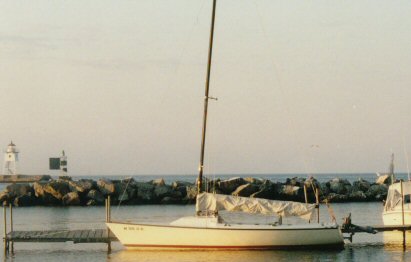
Speaking of art:
Artist’s medium rare and it’s, well, dung
Mesaba Plant in Ron Gustafson’s back yard
July 4th, 2005
Here’s the reality of the Mesaba Project — captured by the STrib — a site in the midst of old growth white and red pine between Big Diamond and Dunning Lakes.
Coal plan may intrude on northern Minnesota idyll
Kevin Diaz,Star Tribune Washington Bureau Correspondent
July 5, 2005
WASHINGTON, D.C. — Ron Gustafson’s dream of a placid retirement on Big Diamond Lake in northern Minnesota is caught in a fractious congressional debate over a national energy bill.
Alongside acres of pine and crystalline water, the St. Paul retiree might be getting a new neighbor: the Mesaba Energy Project, a coal gas power plant with smokestacks and coal trains originally destined for an abandoned industrial site 50 miles away.
Billed as environmentally friendly, the project had been planned for a shuttered steel plant in Hoyt Lakes. But that was before the taconite industry began showing signs of resurgence.
That good news for the industry has become looming trouble for cabin owners around Big Diamond and Dunning lakes in Itasca County.
Owners of the proposed power plant have acquired the rights to 1,000 wooded acres there, in a remote part of the Iron Range once owned by U.S. Steel.
“It’s like any Minnesota lake place,” said Gustafson, who built a retirement home on the lake with his wife 10 years ago. “We were hoping to spend a whole lot of time here when we retire.”
Those plans could change with passage of the energy legislation before Congress. The version of the bill the Senate passed late last month contains unspecified loan guarantees for the $1 billion Mesaba Energy Project, a 500-megawatt power plant that supporters say will generate hundreds of jobs.
Those jobs have been the Mesaba’s biggest selling point on the economically depressed Iron Range. But another attraction has been reusing the old steel plant.
“It was going to be wonderful because the company was going defunct, and they were going to reopen the land and put jobs there,” said state Rep. Alice Hausman, DFL-St. Paul, who opposes the plant. “Well, surprise, surprise. The price of steel goes up, the mining company has zero interest in talking to them, and now they have to go to pristine land on scenic Highway 7.”
Community support
The Mesaba Energy Project already has gained more than $55 million in state and federal aid. That funding arrived before the project’s owner, Minnetonka-based Excelsior Energy Inc., announced in June that it had secured the Itasca County site from RGGS, a Texas land and mineral management company.
The project has received strong community support on the range, but there’s not much of a welcome mat now around Big Diamond Lake.
Earl Orf, a wildlife photographer who homesteads a log cabin in the area, calls it “a very nice, quiet and peaceful place.”
The plant’s potential location change is likely to ignite a new debate about the state funding it is receiving.
The Itasca County Board of Commissioners approved a resolution in June seeking $42 million in state bonding money to develop the new site proposal, which will not be completed until August.
The St. Louis County Board approved a similar resolution last month for the same amount of money to support one of three potential sites for the new plant, including the one in Hoyt Lakes, which is still a possibility.
Those requests follow a hotly debated decision this year in the Minnesota Legislature to give Excelsior Energy $10 million for solar, wind and other renewable energy projects.
“The new location is probably something that will add some concern to whether or not we get to where we want to go,” said state Sen. David Tomassoni, DFL-Chisholm, one of the energy project’s leading supporters. “But the fact is, it’s pretty well on its way now.”
The project has already received $9.5 million from the Iron Range Resources and Rehabilitation Board and $36 million from the U.S. Department of Energy to pursue new technology that turns coal into gas before burning it to produce electricity. Proponents say it is cleaner than traditional coal-fired plants.
U.S. Sen. Norm Coleman, R-Minn., and Rep. Jim Oberstar, D-Minn., have been instrumental in pressing for the federal loan guarantees for the new plant, which would help Excelsior Energy line up as much as 80 percent of the start-up capital it needs.
U.S. Sen. Mark Dayton, D-Minn., another supporter, said any decision on location should be made “by the company, the communities and the local and state officials involved.”
Local officials are not quibbling much about where the plant goes. “An Iron Range project is an Iron Range project,” said state Rep. David Dill, DFL-Crane Lake. “We need the economic development.”
Until now, opposition to the new plant has come mainly from environmentalists questioning the benefits of the new coal technology and from congressional watchdog groups who say the federal money being devoted to it is excessive and risky for taxpayers.
But the newest player in the debate is resurgent steel economy, which has rekindled interest in new mining and taconite projects at the former plant in Hoyt Lakes. It closed in 2001 and cost the area 1,000 jobs. The steel economy’s improving fortunes have forced Excelsior Energy, led by former Hibbing hockey star Tom Micheletti, to look around Big Diamond Lake.
Eminent domain
“Most of the site is unpopulated,” Micheletti said. “There are only a dozen or so properties that would be affected, and most of them are seasonal cabins.”
Although the Legislature has granted the project powers of eminent domain, Micheletti said he hopes he can come to terms with property owners who want to sell.
Since Congress appears close to approving the loan guarantees for the plant, and since Micheletti has won support in the past in the Minnesota Legislature, Gustafson said he has little hope of keeping the plant far from Big Diamond Lake.
“This whole thing is like a locomotive going down the tracks,” he said.
Kevin Diaz is at kdiaz@mcclatchydc.com.
Rice County Answer to RCLUA suit! It’s a hoot!
July 4th, 2005
I finally got my domestics done, so after running the pooch this morning, I dug around on the floor of the car and hauled the mail inside. The Rice County outhouse (not inhouse) attorney, Paul D. Reuvers, of Iverson Reuvers, served their Answer to the RCLUA lawsuit, and I’m still snorting.
Here’s the RCLUA Complaint. Download file Click “read only” button.
Here’s the Rice County Answer. Download file
This Answer is a hoot because it’s totally off point, apparently they haven’t read the statute, and apparently they think we want to overturn Rice County’s decisions!
In the Complaint, I have to lay out the group’s standing to sue, that MERA provides a cause of action to any person, that RCLUA is a corp and that a corp is a person under the MERA statute. In their Answer, they claim that RCLUA is not a “person” under the Minnesota Environmental Rights Act (MERA).
Here’s the statute, 116B.02, Subd. 2 (bold added). What do you think?
Subd. 2. Person. “Person” means any natural person, any state,
municipality or other governmental or political subdivision or
other public agency or instrumentality, any public or private
corporation, any partnership, firm, association, or other
organization, any receiver, trustee, assignee, agent, or other
legal representative of any of the foregoing, and any other
entity, except a family farm, a family farm corporation or a
bona fide farmer corporation.
It’s right there in black and white, “any public or private corporation.” DUH!
In the Complaint, I also have to be specific about what I’m asking the court to do, in this case make a declaratory judgment regarding the many violations of environmental law, that the county’s authority for environmental review be pulled, and that the County Commissioners, County Planning Commission and County Staff receive remedial environmental review training (like the recent training for Dundas officials)(see also Bruce Moreland’s blog). In their Answer, they claim that because we did not properly ask for review of the decisions, or properly appeal the decisions, we have no cause of action under MERA. That might make sense as an argument if we were trying to get review of their decisions, to appeal the decisions, but we’re not. The very specific point of the suit is that they violated the law and we want them to have their authority to do environmental review pulled while they get remedial environmental training. We haven’t asked that any decisions be reviewd or overturned, the decision is not the issue, it’s that they routinely violate environmental law and we want them to stop. We want them to follow the law!
They are also saying that environmental review is under the Minnesota Environmental Policy Act (MEPA) and so therefore there’s no cause of action, but MERA covers all environmental law, there is no prohibition, no limitation under MERA, and conversely, no requirement that suits be brought under MEPA. The entire point of MERA is to make it easy for citizens to hold others accountable for violation of environmental law.
And the County’s rush to develop the I-35 corridor made the Northfield News opinion page again yesterday. It’s on the Northfield League of Women Voter’s blog, David Bly, Northfield City Councilman Jim Pokorney, and at northfield.org — can it be this is rising in the community consciousness?
Here’s some of the land in question, taken just north of the intersection of Co. Rd. 46 and Co. Rd. 1, looking north and east. Can you imagine this scene covered with office buildings and warehouses, with a water tower in the background?
Jim Pokorney states in his letter:
Therefore, I am against the actions being taken by a slim majority of Rice County commissioners to first promote, now plan, then legislate, and finally finance with taxpayers’ money an Interstate 35/Rice County Road 1 commercial district.
I believe any meaningful net increase in jobs or taxes imagined to be harvested on the unincorporated, serviceless rural land along I-35 could be more easily reaped within the confines of one of our growing cities with less taxpayer dollars, less ecological damage to our rural environment, and most importantly, with less irreversible harm to our implicitly agreed upon county way of life exemplified by our social compact.
“Let cities be cities and let rural be rural.”
This compact, never legislated but I believe always understood, has been the basis for this county’s unique lifestyle over the past 150 years.
If you agree with my logic, call your commissioner and reaffirm your commitment to our county lifestyle — both city and rural choices — by leaving at the tone the following message.
“Let cities be cities and let rural be rural.”
And we can always count on Gordon Kelly, Rice County Planning Commission, to shoot himself in the foot. This time, in his letter, he proves my point that the Highway/Commercial rezoning IS NOT IN EFFECT. Remember the EQB guidelines that state the AUAR requirement that an analysis be completed under the plan in effect at the time the AUAR was ordered? That means as it is now, not as it will be December 31, 2005. They can’t avoid it by passing around outdated EQB guidelines. Thanks to Gordon for the backup on my point, unintended as it was! Here’s part of his letter (bold added):
Certainly “Rice County residents posed concerns about water, air, etc.” at the recent public hearing. The purpose of the public hearing was to hear these concerns so they may be addressed during the preparation of an environmental analysis of this commercial zone.
The commissioners did not turn a deaf ear, they simply moved the planning process along so that now those concerns can be analyzed and evaluated. The vote from the commissioners was (yes indeed!) to proceed with the analysis. The master planning of the highway commercial zone is proceeding on schedule and we intend to complete the plan before the Dec. 31 deadline.
The committee must complete the plan by that time because the zoning takes effect with or without a plan. What could be worse than having a highway commercial zone without a plan?
Thank you for clarifying that the Highway/Commercial zoning is NOT in effect now and will not take effect until December 31, 2005. Also, Kelly misrepresents the purpose of that hearing. It was a hearing about whether the Planning Commission would accept the Master Plan, it was NOT a scoping hearing for the AUAR. I did ask Arlyn Grussing whether there would be a scoping hearing, and did not get a response. The prohibition on public particpation at the Committee #1 meeting and the draft AUAR that was distributed to the Committe, but WHICH WAS NOT PROVIDED FOR MEMBERS OF THE PUBLIC TO REVIEW, belies the true nature of this process. I guess that’s what the Data Practices Act is for.
OK, folks, one more time, with feeling, from the EQB’s AUAR guidelines, repeat after me:
Important Note: Every AUAR document MUST review one or more development scenarios based on and consistent with the RGU?s Comprehensive Plan in effect when the AUAR is officially ordered. (This is equivalent to reviewing the ?no-build? alternative in an EIS.)
LOUDER — I CAN’T HEAR YOU!!! AGAIN:
Important Note: Every AUAR document MUST review one or more development scenarios based on and consistent with the RGU?s Comprehensive Plan in effect when the AUAR is officially ordered. (This is equivalent to reviewing the ?no-build? alternative in an EIS.)
AGAIN!
Important Note: Every AUAR document MUST review one or more development scenarios based on and consistent with the RGU?s Comprehensive Plan in effect when the AUAR is officially ordered. (This is equivalent to reviewing the ?no-build? alternative in an EIS.)
… sigh… we’ll see if they’re listening…
Invenergy in Cannon Falls
July 3rd, 2005
Update on Invenergy: Here’s the Cannon Falls Beacon article from the Invenergy forum put on by the Cannon Valley League of Women Voters in mid-June:
Residents learn more about the Invenergy power plant
Here’s the EQB docket for the project with all the documents. And an Xcel memo on this project, scroll down to find it (other interesting info too!)
The Beacon article says that over 100 people attended, I know it was standing room only in a very large room, but to get that kind of turnout on a beautiful summer evening shows the fervor of community interest and the solid reputation of the Cannon Valley League. It was one of the best meetings I’ve been to in a long time!
Another CF Beacon article reported that the Host Fee Agreement negotiations also came up at a recent School Board meeting because the school district is to get a percentage of the Host Fee Agreement.